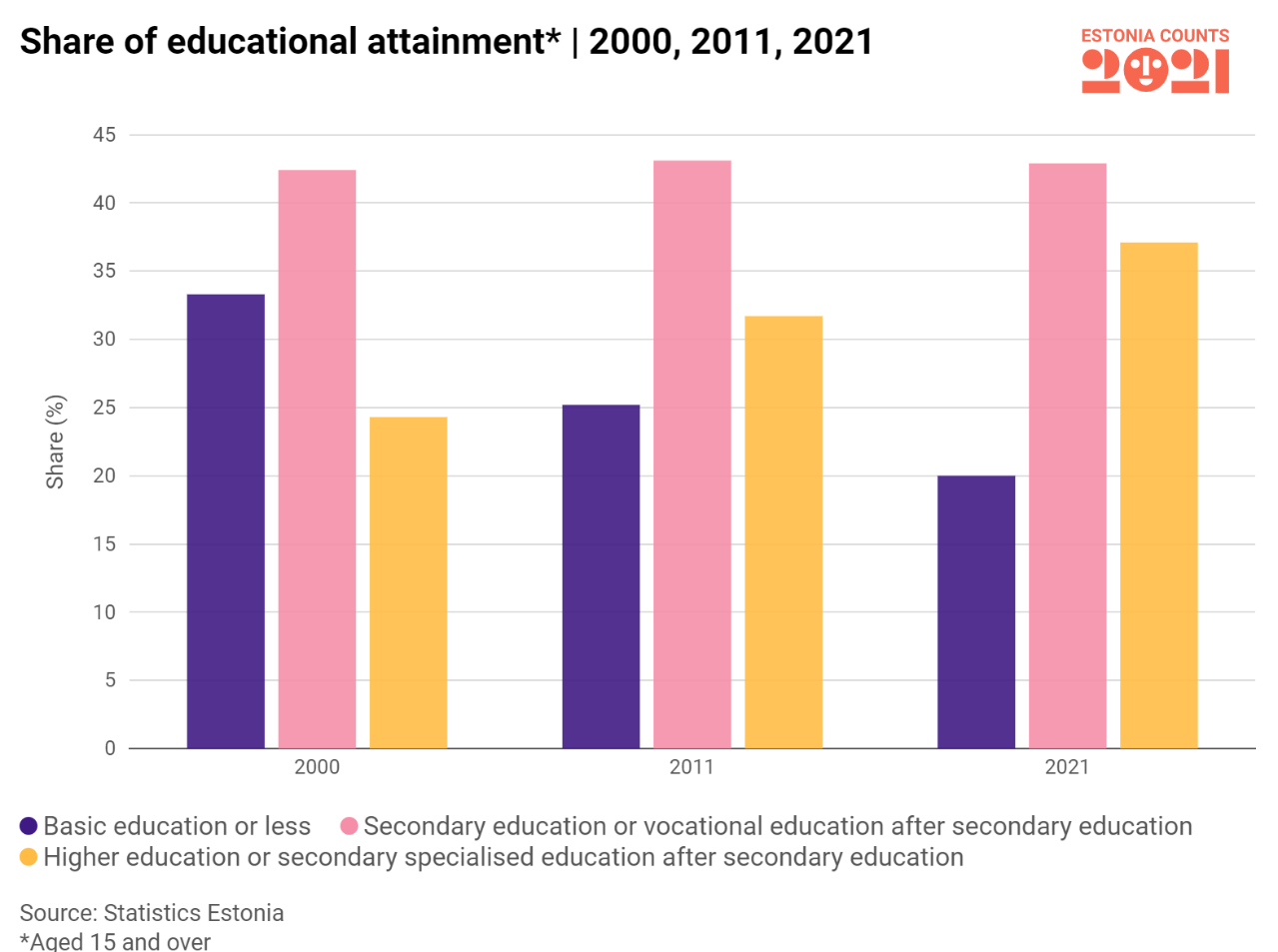One in five people in Estonia have a master’s degree
Data from the 2021 census shows that the share of people with higher education in Estonia is increasing and the share of people with basic education is decreasing. So much so that one in five inhabitants in Estonia have a master’s degree. Tartu and Viimsi stand out for their particularly high concentration of highly educated people.
Triinu Aug, a leading analyst at Statistics Estonia, noted that compared with the previous census, the share of people with higher education has risen and the share of people with basic education has fallen. The proportion of people with secondary education has remained stable.
“Secondary education is the highest educational level for 43 per cent of the population aged 15 and over, and higher education for 37 per cent. 20 per cent of Estonia’s population have basic education or less. It makes sense that the highest educational attainment is related to age – older people have had more time to complete various levels of education. For instance, the share of people with basic education is lowest in the 55–59 age group. Then again, half of the people aged 90 and over have basic education or less because they simply did not have access to higher education when they were young,” said Aug.
The census data revealed that 21.4 per cent of Estonia’s population aged 25–64 have a master’s degree. 17.4 per cent have vocational secondary education and about the same number (17.2 per cent) have general secondary education.
The biggest share of persons with higher education is found in city settlement regions, where 49 per cent of the population aged 25–64 have a higher education. In town settlement regions, 47 per cent of the population have higher education, compared to 30 per cent in rural settlement regions.
Therefore, when comparing counties, as expected, the highest concentration of 25–64-year-olds with higher education is in Harju and Tartu counties, with 52.6 per cent and 46.1 per cent, respectively. The lowest proportions of people with higher education were recorded in Järva (25.5 per cent) and Jõgeva (27 per cent) counties. Viimsi rural municipality stands out with the highest rates, with 62.5 per cent of 25–64-year-olds having higher education.
Estonia is also a valued destination for highly educated foreigners.
“Compared with previous censuses, we have 35 per cent more people with some other mother tongue and higher education than 20 years ago. This means that Estonia is increasingly a destination for highly educated immigrants,” noted Aug.
Lifelong learning is also gaining popularity. Regular surveys conducted by Statistics Estonia have shown that in addition to formal education, people are increasingly active in lifelong learning. According to the Estonian Labour Force Survey, participation in lifelong learning has increased by 54 per cent in the last 10 years and more than tripled compared to 20 years ago.
Participation in lifelong learning is higher among women and the more highly educated people. Estonia’s lifelong learning participation rate of 18.4 per cent is significantly higher than the EU average of 10.8 per cent.

To learn more about this and similar topicsEducation Estonia Higher Education Lifelong Learning Master's Degree Population Census Secondary Education Statistics Estonia Triinu Aug










